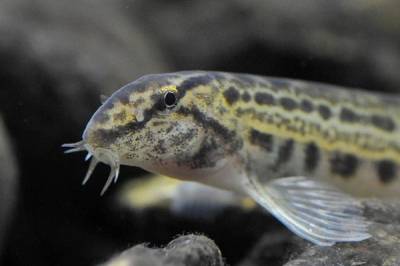


|
Main » Baits
The
appearance of artificial, seminatural and modified natural fishing baits can be
dismatched with their taste. In the laboratory experiments described below, we
have tested the responses of model fish to baits of this kind.
Juvenile
induviduals of wild common roach, Rutilus
rutilus, tench, Tinca tinca,
crucian, Carassius carassius, and home
goldfish, Carassus auratus, of about
5,0-5,5 cm standard length, were used in the experiments. Each fish were
trained individually to eat seminatural sideswimmers, Gammarus lacustris, of calibrated 6,0-6,1 mm length, within 10 days
in order to form an acquired search image, visual and gustatory, in respect of
this food. Then modified sideswimmers, with the taste of white worms, Enchytraeus albidus, earthworms, Lumbricus terrestris, molluscs, Unio pictorum, and grey meat-fly larvae,
Sarcophaga carnaria, were offered for
comparison.
Seminatural
sideswimmers were prepared of natural amphipods by soaking them in pure alcohol, within 12
hours, and subsequent rinsing in pure flowing water, within 2 hours.
Then soaking prey were placed
into the mess of crushed
natural amphipods for 12 hours, to return them the
(semi)natural taste. In other four cases, soaking amphipods were gustificated
for the same 12 hours in the mess of white worms, earthworms, molluscs and grey
meat-fly larvae, respectively.
Note,
seminatural and modified amphipods had the same pale color.
Fish
were trained to eat seminatural amphipods which were offered one by one through
the transparent glass tube in the aquarium cover. Fish noticed the sinking amphipod and
fell behind it. When the sinking amphipod appeared out of the tube, fish grabbed
it, tested some time, spitting and grabbing, and ate or ignored.
After
10 day training, fish usually ate each seminatural amphipod immediately,
without test spittings, or after no more than 1-2 spittings. However, when an
amphipod with an unfamiliar taste was offered, this picture changed. The number
of spittings increased dramatically, up to 12-16 and more during the first
familiarization. Fish mostly rejected an unusual amphipod,
then returned to it to test again and so
on. In general, about 10 days of training were needed in order to return the
number of test spittings to the minimum, that is to 0-2 spittings.
No
differences were observed between natural amphipods and amphipods with the
restored taste.
...
Read more »
|
Earthworms,
Eisenia foetida, are widely used as
an accessible bait for many fish. Fishing practice shows, however, that
these worms are not as attractive to fish as it is commonly believed.
The
scientific term foetida references
the well known fact that these worms use the yelowish stinky secretion
for self-defense. If the worms are handled roughly, they emit an unpleasure
odor designed to drive away predators. This stinky secretion can also be used
to distinguish E. foetida from some close relative worms that
look in the similar ways.
In
addition, there are problems with the palatability and nutritive value of these
worms as food for fish in aquaculture in
comparison with other
earthworm species (Stafford & Tacon, 1985; Reinecke et al.,
1991; Ortega et al., 1996; Kostecka & Pączka, 2006). The aim of
the foregoing research was to find the strong arguments advocating an idea to
use these worms as an available protein source to fish.
Fishing Practice
In the field
experiments, we compared the attractivities of an odor of squashed live earthworms,
E. foetida, that may be unfamiliar food to fish, and an odor
of natural food. Spined loach, Cobitis taenia, were selected as an model fish due to their abundance
in the research area, small size (usable for minnow traps) and the night type
of feeding activity (Robotman, 1977; Marszał et al., 2003). Squashed live
bloodworms, Chironomus plumosus, were
used in the capacity of food that is closer to the natural diets of spined
loach in the different habitats than terrestrial earthworms.

Spined loach, Cobitis taenia (powered by Lubomir Hlasek)
Experiments were carried out in the upper part of Kaniv’s reservoir, below
Kyiv, in the summer season.
Fish were caught in the narrow ducts of
20-40 cm depth with the slightly muddy sandy bottom and few macrophytes like pondweeds. Because spined
loach were small (4-6 cm), that is mean length for this species, simple minnow
traps made of 6 liters transparent plastic bottles were used. When setting at the
bottom, the necks of the traps were located at the distance of 20 cm from each other and submerged by half into the sand. After final trap setting, feeders with 3gr of squashed
earthworms and, correspondingly, 3gr of squashed bloodworms were fell through
the top holes in the pair traps. Traps were
...
Read more »
| |
|
CALENDAR |
|---|
| « December 2025 » |
| Su |
Mo |
Tu |
We |
Th |
Fr |
Sa |
| | 1 | 2 | 3 | 4 | 5 | 6 | | 7 | 8 | 9 | 10 | 11 | 12 | 13 | | 14 | 15 | 16 | 17 | 18 | 19 | 20 | | 21 | 22 | 23 | 24 | 25 | 26 | 27 | | 28 | 29 | 30 | 31 | |

|




